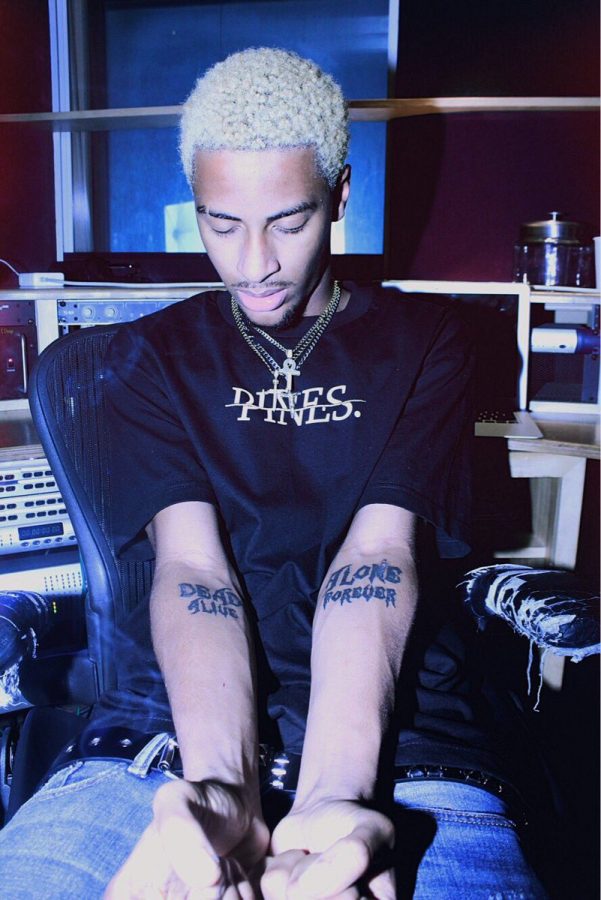Comethazine and the Rise of Anti-Melody

Comethazine and the Rise of Anti-Melody
Comethazine's recent album "Bawskee 2" features an exciting new trap sound. (Twitter)
Comethazine's recent album "Bawskee 2" features an exciting new trap sound. (Twitter)
February 13, 2019
Filed under Culture
Hang on for a minute...we're trying to find some more stories you might like.
Email This Story
By Kieran Press-Reynolds
If you have been following the underground hip-hop scene this past year, you probably stumbled upon one or two songs that sounded a bit “empty.” By that, I mean structurally malnourished: no melody, only bass, kicks and sometimes hi-hats. What usually supplants the melody is an angry vocal performance that feels uncontained, which fits the mood. These tracks are like undercooked beef: raw and flaming red.
The trend started back in 2015, when XXXTentacion released his signature screamo cuts like “TAKE A STEP BACK” and “RIP ROACH.” They are hard to listen to precisely because each track is an ear-pummeling, unorganized onslaught.
Since then, the sound has developed. In place of relentless bass pulses, newer artists have opted for a groovy spaciousness. The chords are laid out carefully and patterned, so tracks find their melody (anti-melody) in the moments between each jarring bass blare, instead of solely relying on the bass to provide the bump. It is a tuneful minimalism.
One of the best tracks that use this style is Texas-based Quin NFN’s “Talkin’ My S–t.” It is a positively intoxicating rap song, and yet it sounds more like a freestyle than anything else. Quin NFN seems to dissolve into the bass over time, as if his hoarse voice and each ad-lib and vocal tic is just a programmed extension of the metronomic instrumental.
Similarly, “Intro Part 2” by Splurge — also from Texas — is very much anti-melody. After a certain point, you begin to wonder how much time the artists really spent on this beat because it is basically the same hat-hat-hat-clap-bass structure, with no variation, for two-and-a-half minutes.
One of the more mainstream proponents of anti-melody is Comethazine, a SoundCloud upstart from St. Louis. In the past, Comethazine has been denigrated thoroughly for his unoriginality. Everything on his debut album “Bawskee” felt like a blatant ripoff of other trap artists like Playboi Carti and Tay-K.
But on his newest album, “Bawskee 2,” he makes a pivot towards anti-melody and creates his best and most original track yet, “ONMYGRANNYKIDS.”
The song revolves around a consistent three-note bass pattern that acts as the groove, which becomes hypnotic over time. The pattern is repeated sparingly enough that it is never overbearing and instead feels like the soundscape lurching forward each time.
On top of that, Comethazine has created a brand for himself with profane, inane vocal tics: the squeaky “B—h!,” the shrieking “boom!,” the disgusted “BYE,” the “no” and the “ew!” It is a collage of atrocious sound vomit that constitutes a sort of language in itself, and like other famous ad-libbers such as Playboi Carti and Sheck Wes, adds to the infectiousness of the already-infectious song.
Finally, the reverb brings it all together. As far as I know, Comethazine is one of the first to integrate reverb seriously into an anti-melody track. The reverb extends each vocal into a ghostly echo, emphasizing the emaciation of the track in a druggy way.
Ghostly and psychedelic, “ONMYGRANNYKIDS” at once sounds ironic and pure genius. The first time I heard it, I thought Comethazine was trying too hard to be “hard” or aggressive. But once I started paying attention to the ad-libs and the reverb effects, I could not stop listening.
Anti-melody is the perfect counterpoint to pop-trap, which has found mainstream success through artists like Juice WRLD. Where pop-trap opts for melody and emotional vocal performances, anti-melody seeks to expunge as much humanity as possible. It is a sort of reaction to the proliferation of Auto-Tune, which has blurred the distinction between rapping and singing and is especially prevalent in pop-trap.
In this way, anti-melody appears to be an attempt to seem “real” and reclaim gangsta rap from the clutches of candy-colored vocalists like the aforementioned Juice or Travis Scott. But I do not think so. In fact, I do not think these new-wave rappers care much about what sounds gansta or “street.” They are simply appealing to the times and attempting to be creative. It is pure hedonism and certainly worth a listen.












If you want a picture to show with your comment, go get a gravatar.